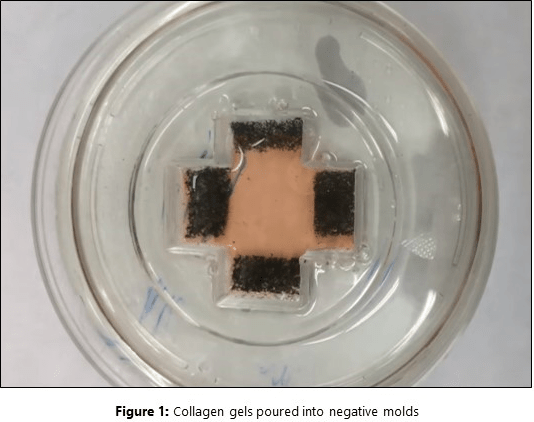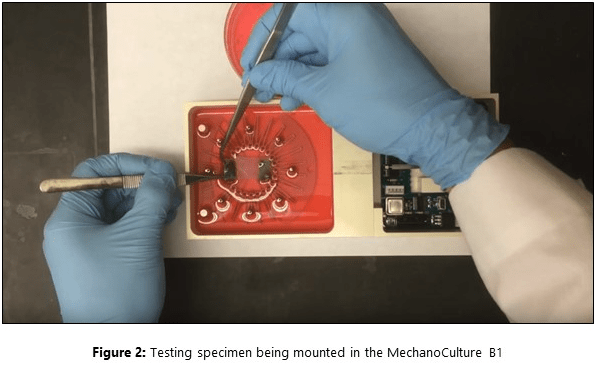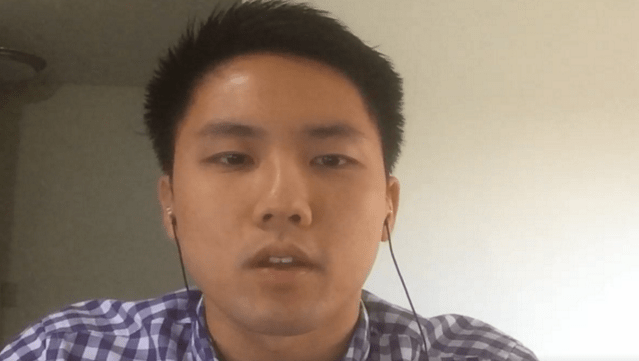In this installment of the blog, Caleb Horst chats with Kellen Chen from the Cardiac Biomechanics Group within the lab of Professor Jeff Holmes at the University of Virginia. Kellen is studying the effects of mechanical stimulation on tendon healing using the MechanoCulture B1.
Caleb Horst: Thanks for joining me today. I wondered if you could start by just introducing us all and telling us a little bit more about your research?
Kellen Chen: My research and my lab is very interested in the healing tendon. We know that when tendons heal, we need to have the right amount of collagen, in the right alignment, in order to carry the load. Studies in rats have shown that tendon immobilization or movement during healing can affect these factors in different ways, and we’re very interested in studying this in vitro.
CH: Can you tell me a little bit more about how you’re isolating this effect, what type of samples you’re using and how you’re doing the tests?
KC: Yes. In order to isolate the effects of the mechanical load, we’re testing fibroblast-populated collagen gels. These collagen gels are extremely soft, making it very difficult to impose a mechanical load onto them. So while they’re still in the solution phase, we embed sponges at the arms and use these arms as anchor points to attach to the pins within the MechanoCulture device. From there we can make our gels in many different shapes for many different loads.
CH: Right, and so you cast these gels in some kind of mold with the sponges preset in the mold?
KC: Yes. We have a petri dish that has a PDMS [Polydimethylsiloxane] layer, and we also have these negative molds we’ve made out of PDMS also. We put the negative molds in our dish and pour the collagen gels in them with the sponges at the ends [Figure 1] and move them into the incubator. In the incubator the collagen will start to cross and consolidate and solidify and after that we can remove our negative molds.

KC: Right, so we’re very interested in how the different types of stretch will affect the collagen and fibroblast behavior, and the great thing about the CellScale MechanoCulture is that you can program any type of loading protocol inside of the stretch device, including static stretch, cyclic stretch, or intermittent stretch. These various loading protocols are being used to simulate different types of physical therapies in injured tendon: static stretch imitates putting the tendon or the gel in a cast, cyclic stretch imitates allowing it to have free movement, and intermittent stretch imitates small initial spurts of exercise.

CH: And then you run these protocols for a period of time in the incubator? How long do you run them and then afterwards do you do some sort of evaluation protocol to see what happened to the collagen levels and orientation? Can you tell me a bit more about that?
KC: So currently in my research, we’re stretching them for 24 hours. However, we’ve also done some experiments where we’ve stretched it for a shorter amount of time at around six hours, as well as longer periods of time as 48 hours. So we can also program how long we want to stretch it. Once we’re done with our loading protocol we take it out of the incubator and we fix the gel in 4% paraformaldehyde. Then right now we are staining them for the actin stress fibers so we can look at the cell alignment. What we found is that the cell alignment and the actin alignment actually dictates the collagen alignment, so we can use that to look at all the mechanics that are going on in there.
CH: Sounds like a really great application Kellen, but not exactly what everybody who is using the MechanoCulture is doing – it’s a little bit of a unique application. Can you tell me about how you had to adapt the system for this application?
KC: The system has been really great for performing a normal uniaxial stretch where I just attached my collagen gels at the two ends and allowed it to stretch out. However, recently we’ve been very interested in a strip uniaxial loading for our collagen gels in which we still have the uniaxial stretch in one direction. However, in the other direction, you’re actually holding the gel and preventing it from compacting at all. So the great thing about CellScale is that the representatives were extremely helpful in providing advice and resources for us to modify and customize the device to obtain our desired stretch ratio, where you have stretch in one direction but no stretch in the other direction. The ability to prescribe our own magnitudes and frequencies of stretch in our cyclic and static stretch modifications as well as being able to create our own stretch ratios allows us to test a variety of protocols that wouldn’t be possible in any other system.
CH: Have you reached the point of understanding the correlation between stimulation and alignment and collagen production? What kind of discoveries have you reached so far?
KC: We’ve come upon some very interesting discoveries regarding both how the stretch and also the compaction within the gel could affect the cell and collagen behavior. However it’s still a little early in my research and a little too early to tell. I hope to have more things to tell you in the future.
CH: I want to thank you, Kellen, for taking the time to talk with me today about this. It’s really interesting research and thanks for sharing!
Watch the interview online: https://www.youtube.com/watch?v=T4uk2ED_Z-M
CTA: Learn more about CellScale’s MechanoCulture B1 or check out some of our customers’ publications.








